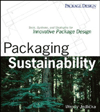Web exclusive
Advancements in flexography offer more vivid package printing, rapid changeovers for customized applications

Consumer goods manufacturers and package designers are benefiting from the steady improvement of flexographic package printing technologies. The improvements heighten flexo’s ability to produce striking, photo-quality graphics with high shelf impact, making flexography suitable for a broader range of packaging applications.
The quality of flexographic package printing varies significantly depending on press technology. Consumer goods manufacturers are well advised to work with packaging suppliers that boast the most advanced flexographic printing presses.
The latest flexo presses are capable of printing high-definition images and graphics in resolutions up to 4,000 ppi (pixels per inch). They typically feature advanced plate technology with the ability to produce sharply defined flat top dots. Compared with conventional dots, flat top dots offer greater uniformity and vividness across the entire printed image. The presses print on virtually any substrate, including plastics, films and cellophane.
The continuous plate sleeves used in modern flexo presses are an additional improvement. They provide continuous imprint from impression to impression, eliminating the spaces and seams that were an issue in the past. Other advanced features include automatic register control and impression setting, and full web inspection for print defects and color control.
Short Runs, Quick Changeovers
Modern flexographic printing meshes well with the growing trend toward customized consumer goods packaging. Flexo printing plates take only a short time to produce, and the presses can cost-effectively support packaging applications requiring short runs and quick changeovers.
The presses’ short-run capabilities enable consumer goods manufacturers to make more frequent package changes in response to consumer demand. This reduces working capital requirements for packaging and cuts inventory levels. When package designs change, there is less inventory in stock that needs to be scrapped.
Customized packaging with flexographic printing is already making inroads in a host of markets, including pet food. Some pet food producers, for example, make different food formulas for specific dog breeds and sell them in small quantities at specialty stores and through veterinarians. The companies can now affordably market these products in customized breed-specific packaging.
Press Operator Training
In addition to press technology, a second factor impacts the quality of flexographic printing: the expertise of press operators. It’s a good practice for consumer goods manufacturers to verify that their suppliers’ operators are well trained in the fundamentals of flexographic printing.
Training resources are offered by a number of organizations, including the Flexographic Technical Association (FTA). The FTA provides training through its website for flexo prepress and press operators. The operators learn to identify troublesome issues, perform accurate device calibrations, maximize press efficiency and achieve consistent and repeatable results. Operators who complete the training program earn FTA certification.
Pat Kaelin is Manager of Flexo Operations at Mondi Jackson, Mondi in North America (mondigroup.com).
Looking for a reprint of this article?
From high-res PDFs to custom plaques, order your copy today!








